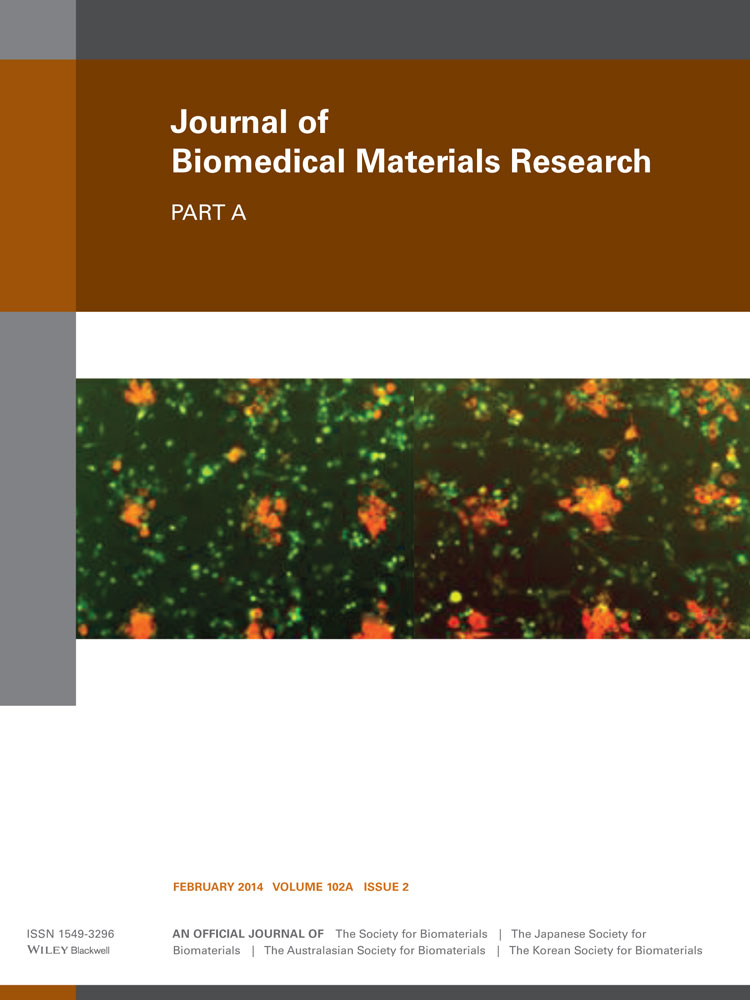Preparation of chitosan/silk fibroin/hydroxyapatite porous scaffold and its characteristics in comparison to bi-component scaffolds
Abstract
Composite porous scaffolds have attracted extensive attention in the biomedical material field. The aim of this research was to prepare a novel tri-component composite porous scaffold and to evaluate its relevant properties. The porous scaffold was composed of chitosan (CS), silk fibroin (SF), and nanohydroxyapatite particles (nHA), which we named CS/SF/nHA scaffold and prepared via salt fractionation method combined with lyophilization. The porous structure was achieved using a porogen (salt), and the pore size was controlled by the size of porogen. To evaluate the characteristics of the tri-component scaffold, three bi-component scaffolds, CS/SF, CS/nHA, and SF/nHA, were simultaneously prepared for comparison. The scaffolds were subjected to morphological, micro-structural, and biodegradation analyses. Results demonstrated that all of the scaffolds had pore sizes of 100–300 μm and a porosity of 90.5–96.1%. The biodegradation characteristics of all scaffolds meet the requirements of good biomedical materials. The investigation of the mechanical properties showed that the tri-component scaffold has better properties than the bi-component scaffolds. The in vitro biocompatibility with osteoblast-like MG-63 cells showed that all the scaffolds are suitable for cell attachment and proliferation; however, the CS/SF/nHA composite porous scaffold is much more effective than the others. © 2013 Wiley Periodicals, Inc. J Biomed Mater Res Part A: 102A: 366–372, 2014.




